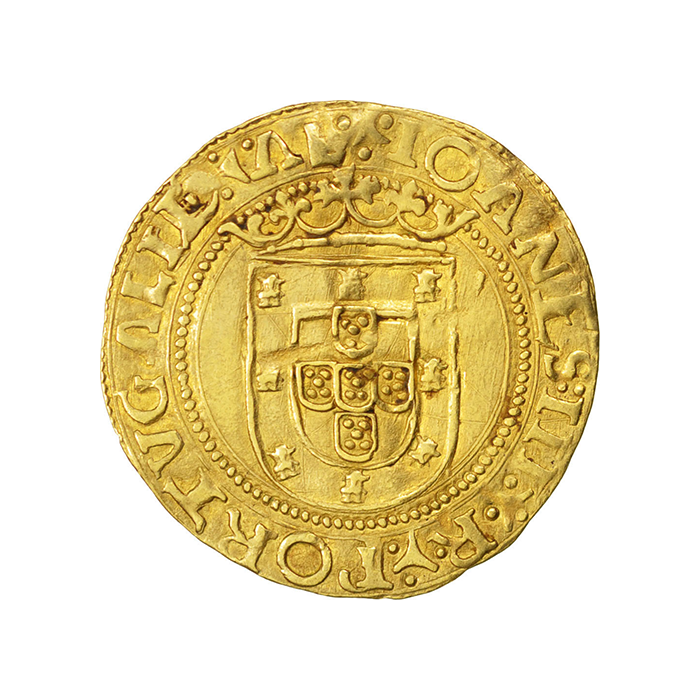The Portugal Gold Peca is also known as the Portugal Gold Peça. It was the official standard gold coin of Portugal as early as the beginning of the eighteenth century. Its value was equivalent to 6400 réis and, after 1826, this increased to 7,500 réis.
The Peça – João VI is the most common Portugal Gold Peca coin. It was first minted in 1818 with a mintage of 291. The subsequent years of 1819, 1820, and 1821 had mintages of 1,727, 1,687, and 391 coins, which did not have variances. In 1822, 1823, and 1824, mintage increased to 30,000, 27,000, and 1,553 coins with varieties of branches and cross as well as the number of fruits on the reverse. However, all the coins retained the gross weights, gold fineness, and actual gold weights of 14.3420 grams, 0.4228oz, and 0.9170.
Predominantly, though, the Portugal Gold Peca coins have the bust-size effigy of Joannes VI facing to the right taking up more than two-thirds of the obverse. His head is adorned with a fruited branch and the side burns are evident although the moustache is shaved clean. The inscription, “JOANNES·VI D·G·PORT” appears behind the effigy and runs clockwise. The text, “BRASIL·ET·ALG·REX” runs clockwise to the left in front of the effigy while the year is inscribed at the bottom and slightly towards the left running anticlockwise.
The reverse of the Portugal Gold Peca contains the crowned coat of arms of Portugal encapsulated in a decorated globe. A wreath of two fruited twigs intertwined at the bottom flank the globed, crowned, coat of arms on either side. The Portugal Gold Peca coin has a milled edge and collectors and investors to not pay sales tax or VAT for trading in the coin. It was minted by Lisbon’s Mint, which is most likely the oldest in Portuguese State with dates traceable to as far back as when D. Dinis was the ruler. Back then, records show that it was situated in Santa Apolónia at the Door of the Cross (Porta da Cruz). After various relocations, it finally settled in its current place in 1941.



